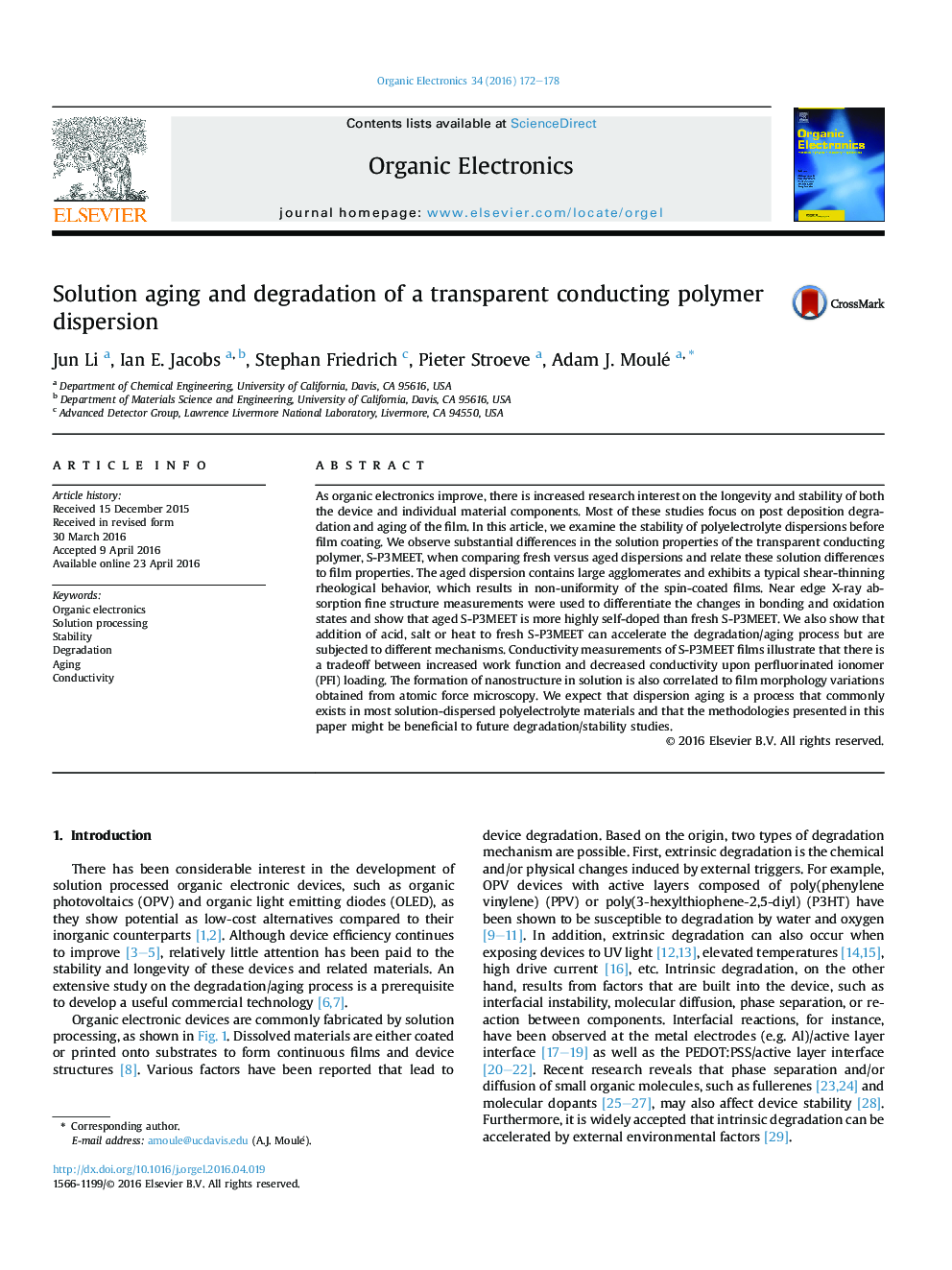| Article ID | Journal | Published Year | Pages | File Type |
|---|---|---|---|---|
| 1266915 | Organic Electronics | 2016 | 7 Pages |
•The stability of a transparent conducting polymer before film coating is examined.•Fresh S-P3MEET solution is homogenous and behaves as a typical Newtonian fluid.•Aged S-P3MEET solution shows large agglomerates and a shear thinning behavior.•Addition of heat, acid or salt can accelerate fresh S-P3MEET aging process.•The effects of acidic PFI additive on film properties are investigated.
As organic electronics improve, there is increased research interest on the longevity and stability of both the device and individual material components. Most of these studies focus on post deposition degradation and aging of the film. In this article, we examine the stability of polyelectrolyte dispersions before film coating. We observe substantial differences in the solution properties of the transparent conducting polymer, S-P3MEET, when comparing fresh versus aged dispersions and relate these solution differences to film properties. The aged dispersion contains large agglomerates and exhibits a typical shear-thinning rheological behavior, which results in non-uniformity of the spin-coated films. Near edge X-ray absorption fine structure measurements were used to differentiate the changes in bonding and oxidation states and show that aged S-P3MEET is more highly self-doped than fresh S-P3MEET. We also show that addition of acid, salt or heat to fresh S-P3MEET can accelerate the degradation/aging process but are subjected to different mechanisms. Conductivity measurements of S-P3MEET films illustrate that there is a tradeoff between increased work function and decreased conductivity upon perfluorinated ionomer (PFI) loading. The formation of nanostructure in solution is also correlated to film morphology variations obtained from atomic force microscopy. We expect that dispersion aging is a process that commonly exists in most solution-dispersed polyelectrolyte materials and that the methodologies presented in this paper might be beneficial to future degradation/stability studies.
Graphical abstractFigure optionsDownload full-size imageDownload as PowerPoint slide
